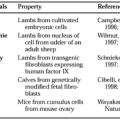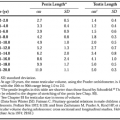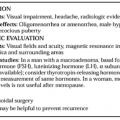EMBRYOLOGY OF THE THYROID
To understand and evaluate the morphologic and clinical aspects of thyroid disease, knowing the embryology, anatomy, cytology, and immunohistochemistry of the thyroid gland is essential. The embryologic development of the human thyroid gland can be understood by distinguishing between the origin of the medial portions of the gland and the lateral lobes (see Chap. 47). The medial portion of the thyroid arises as a bilobed vesicular structure at the foramen cecum of the tongue; it is attached to the tongue by the thyroglossal duct. Beginning in approximately the fifth week of fetal life, as the heart and great vessels move caudally, the thyroid gland descends until it reaches its adult location in the lower anterior neck. This descent of thyroid tissue is accompanied by the elongation of the thyroglossal duct, which normally atrophies. Remnants of thyroid tissue may persist anywhere along this pathway of descent. If the thyroglossal duct does not atrophy, it may become cystic, dilated, or even cancerous.1
Stay updated, free articles. Join our Telegram channel

Full access? Get Clinical Tree






